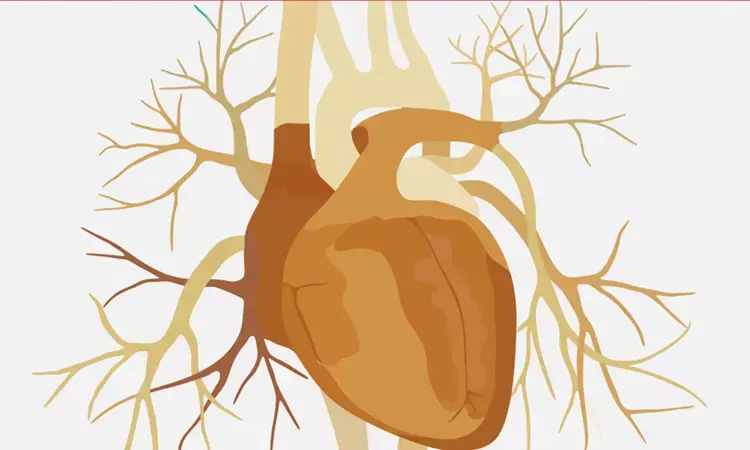- Home
- Medical news & Guidelines
- Anesthesiology
- Cardiology and CTVS
- Critical Care
- Dentistry
- Dermatology
- Diabetes and Endocrinology
- ENT
- Gastroenterology
- Medicine
- Nephrology
- Neurology
- Obstretics-Gynaecology
- Oncology
- Ophthalmology
- Orthopaedics
- Pediatrics-Neonatology
- Psychiatry
- Pulmonology
- Radiology
- Surgery
- Urology
- Laboratory Medicine
- Diet
- Nursing
- Paramedical
- Physiotherapy
- Health news
- Fact Check
- Bone Health Fact Check
- Brain Health Fact Check
- Cancer Related Fact Check
- Child Care Fact Check
- Dental and oral health fact check
- Diabetes and metabolic health fact check
- Diet and Nutrition Fact Check
- Eye and ENT Care Fact Check
- Fitness fact check
- Gut health fact check
- Heart health fact check
- Kidney health fact check
- Medical education fact check
- Men's health fact check
- Respiratory fact check
- Skin and hair care fact check
- Vaccine and Immunization fact check
- Women's health fact check
- AYUSH
- State News
- Andaman and Nicobar Islands
- Andhra Pradesh
- Arunachal Pradesh
- Assam
- Bihar
- Chandigarh
- Chattisgarh
- Dadra and Nagar Haveli
- Daman and Diu
- Delhi
- Goa
- Gujarat
- Haryana
- Himachal Pradesh
- Jammu & Kashmir
- Jharkhand
- Karnataka
- Kerala
- Ladakh
- Lakshadweep
- Madhya Pradesh
- Maharashtra
- Manipur
- Meghalaya
- Mizoram
- Nagaland
- Odisha
- Puducherry
- Punjab
- Rajasthan
- Sikkim
- Tamil Nadu
- Telangana
- Tripura
- Uttar Pradesh
- Uttrakhand
- West Bengal
- Medical Education
- Industry
Both trabecular and cortical BMD affect coronary-artery calcium score: JAMA

Sweden: Trabecular and cortical volumetric bone mineral density (BMD) have opposite association with coronary-artery calcium score (CACS), suggests a recent study in the journal JAMA Cardiology. The findings of the study suggest a different role of trabecular and cortical volumetric BMD on coronary artery calcification risk, mainly in women.
Both trabecular and cortical volumetric bone-mineral density (BMD) are associated with coronary-artery calcium score (CACS), but in different directions, according to a new pilot study.
The association between cardiovascular diseases and osteoporosis has been reported extensively. Previous studies have shown an inverse relationship between trabecular bone volumetric BMD in the spine and CACS. However, the association between cortical vBMD (Ct.vBMD) in the long bones and CACS might be different from the association for Tb.vBMD as the 2 bone compartments are largely differentially regulated. In simpler words higher the trabecular volumetric BMD in the spine lower is the coronary-artery calcium score (CACS) but the relationship between cortical volumetric BMD with CACS has not been reported before.
Claes Ohlsson, Sahlgrenska University Hospital, Gothenburg, Sweden, and colleagues compared the associations of trabecular and cortical volumetric BMD with CACS in the study involving 541 women and 519 men aged 50 to 64 years.
Key findings of the study include:
- As previously shown, trabecular volumetric BMD was independently inversely associated with CACS.
- Cortical volumetric BMD, on the other hand, was independently directly associated with CACS greater than 0.
- A high ratio of cortical to trabecular volumetric BMD was significantly associated with an increased risk of CACS greater than 0 and with CACS greater than 100.
- All these associations between BMD and CACS were significant in women, but not in men.
"We propose that distinct pathophysiologic mechanisms exist for the trabecular versus cortical bone in the bone-vascular axis," wrote the authors.
"Validation in independent cohorts should be performed to determine whether the cortical to trabecular volumetric BMD ratio, integrating information from both bone compartments, may be used as a risk marker for coronary artery disease in women," they concluded.
"Associations of Trabecular and Cortical Volumetric Bone Mineral Density With Coronary Artery Calcification Score: The Swedish Cardiopulmonary Bioimage Study Pilot Study," is published in the journal JAMA Cardiology.
DOI: https://jamanetwork.com/journals/jamacardiology/article-abstract/2771676
Dr Kamal Kant Kohli-MBBS, DTCD- a chest specialist with more than 30 years of practice and a flair for writing clinical articles, Dr Kamal Kant Kohli joined Medical Dialogues as a Chief Editor of Medical News. Besides writing articles, as an editor, he proofreads and verifies all the medical content published on Medical Dialogues including those coming from journals, studies,medical conferences,guidelines etc. Email: drkohli@medicaldialogues.in. Contact no. 011-43720751


